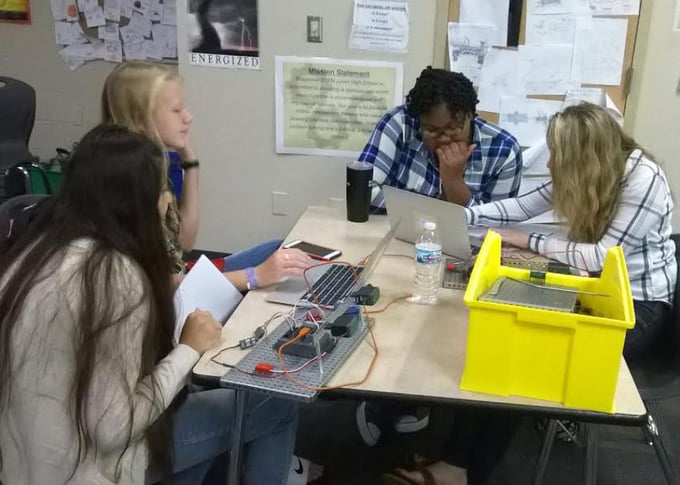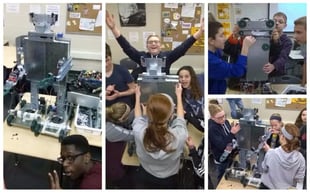Ross Hartley teaches Automation and Robotics at Pickerington Ridgeview STEM Junior High in Pickerington, Ohio.
After teaching sixth grade math and science during my first two years as a teacher, I was extremely nervous and apprehensive to become a robotics teacher. I did not study robotics in college, and I had never, ever pictured myself in this role. But I am so very happy to have taken on this challenge. This is my third year teaching the PLTW Gateway Automation and Robotics unit, and I absolutely love what I do.
Breaking Down Barriers
My favorite part about teaching this class is the atmosphere and expectations that I set with this class and my students. From the first day of school, I broke down the walls of the teacher-student dynamic in which the teacher is looked at as the bearer of all knowledge, and all knowledge is passed down from the teacher to the students. I created a culture in which students and their knowledge are equally valued and as important as the teacher’s. This led to a culture of mutual respect and collaboration. I, as the teacher, was not viewed as the bearer of all knowledge, but as a helpful resource to rely on when problems arose. The most important part of creating this culture is setting up those expectations from the beginning of school.
Collaboratively Solving Problems
The major theme from this class was problem solving. I would present students with a variety of real-world scenarios, and they would have to think of a design to solve that problem. They would work in groups of two to four students to create, construct, and program these robots to solve the problems I presented to them. This allowed for A LOT of different interpretations and ways to solve these problems, which was awesome!
Incorporating Teaching Strategies
Several key strategies that I incorporated into the class that proved to be successful were purposeful grouping, incorporating student choice, and using students in a teacher’s role to help other students who needed more assistance.
I incorporated a “Menus” style of teaching and learning. Students would be purposefully grouped into groups of two to four and then they would be presented with three different levels of activities: “Appetizer,” “Main Meal,” and “Dessert.” Within each level, students would have to choose one task out of three or four different options. As a group, students would choose which task to complete. Once decided, students would work as a group to design, build, and program the robot to complete the task. I would watch the robot perform the task, sign off on their paper, and they would move on to the next part of the “Menu.” The activities got progressively more difficult as students moved from the “Appetizer” to the “Main Meal” to the “Dessert” level, with the “Dessert”-level activities being the most difficult.
As the years go, I cannot help but think about how much I have learned and how better of a teacher that I have become because of teaching this class. One thing that I realized early on in my teaching career is how much teachers learn from their students. Teaching this class has been one of the best learning experiences of my life.
PLTW’s blog is intended to serve as a forum for ideas and perspectives from across our network. The opinions expressed are those of each guest author.


